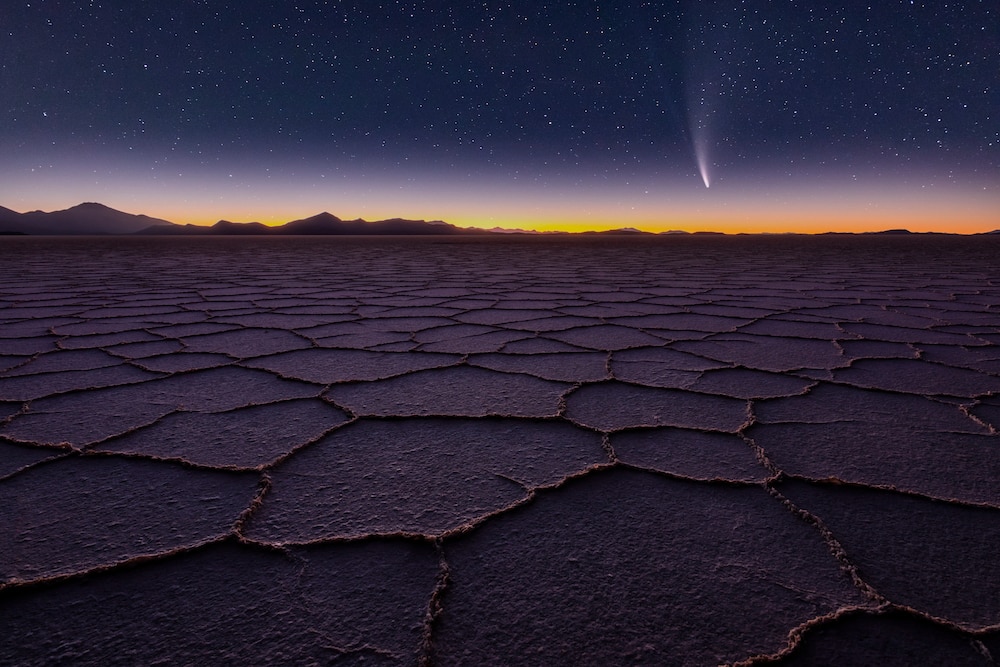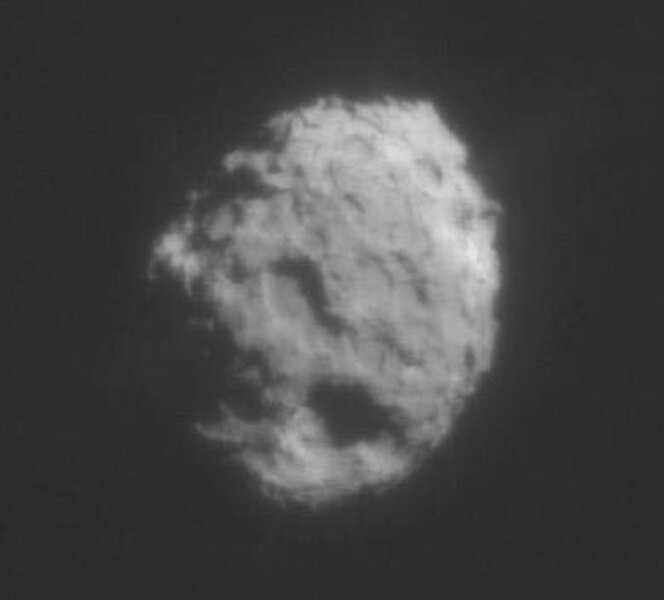Create a free profile to get unlimited access to exclusive videos, sweepstakes, and more!
Glass reveals a ginormous comet exploded right above the Atacama desert 12,000 years ago
We just learned a comet exploded over the desert some 12,000 years ago, and the evidence was trapped in glass.

Imagine a comet hurtling down to Earth — and exploding into a spectacular firework.
Something like that is now thought to have happened above the Atacama desert thousands of years ago, after traces of suspiciously extraterrestrial minerals proved to be a match for those found in a sample that NASA’s Stardust mission took from the comet Wild 2 (below). This wasn’t just any random object burning up in the atmosphere. It must have been dangerously close to the surface before it went boom with several times more power than an atomic bomb.
Researcher Scott Harris of Fernbank Science Center, who coauthored a study recently published in Geology, thinks the glass (really melted sediment from the explosion) found near Pica, Chile, could have only been created by something with that kind of power — not to mention scorching air and extreme winds. The comet was already breaking up on its descent. Harris found it was so massive that each piece which struck was around 164-328 feet in diameter. Scary.
“Earth gets hit with lots of stuff,” Harris told SYFY WIRE. “Most chunks of ice and rock that penetrate the atmosphere are small enough to break up high above our heads, but occasionally we run into larger objects. We don’t always know where they are, but they are out there.”
There has never before been clear evidence that intense thermal radiation and winds from an exploding comet created glasses here on Earth. Though some of the pieces of greenish-black Pleistocene-era glass found in the area are in the form of thin slabs, many look twisted and warped, and some melts ended up forever entangled with others. That means there was enough heat for them to be reshaped again and again before it finally died down, though some still have blobs of sand and other materials that never melted. This glass was tortured.
Harris and his team could see the different layers of glass once they studied the warped samples up close. Sometimes there were slight differences in color or texture (or both) between layers, depending on what they were made of. They were also able to tell which melts slid past each other in the literal heat of the moment. Gases that escaped from the molten glass left holes, or vesicles, behind, and those were stretched out as glass that had still not solidified slid this way or that. At such high temperatures, zircons in the glass morphed into baddeleyite.
“When you have decomposition of zircons at ultra-high temperatures and extremely rapid quenching, the reaction often completely decomposes the whole zircon grains, leaving zirconium and silicate ions along with silicon dioxide,” said Harris.
The zirconium ions that form zircon crystals have already either lost or gained electrons. When those crystals are exposed to temperatures of nearly 3,100 degrees Fahrenheit, the ionic bonds, which were initially formed from ions with opposite charges attracting each other, become increasingly unstable. This process takes apart the zircon crystals and forms the rare zirconium oxide mineral baddeleyite. It has been found in lunar basalts that formed from ancient volcanic eruptions, not to be confused with those on Earth, as well as in meteorites and their debris.
Baddeleyite is partly what eliminated other ways the glasses could have formed. There was no evidence of volcanic activity in the Atacama desert, and even though there had been previous assumptions that grass fires might have been hot enough to melt sand into glass, there was too much glass for that hypothesis to work out. It was also impossible for grass fires to generate enough heat to form baddeleyite. Inclusions of cubanite, trollite, and minerals rich in aluminum and calcium also matched the Stardust Mission analysis of Wild 2. The culprit had to be a comet.
“Relatively small comets are very likely to disrupt the atmosphere and leave behind evidence that we see in Atacama,” Harris said. “To understand the record of these types of collisions in the past and help us assess the risk of future strikes, we need to understand how to recognize these types of effects.”



























